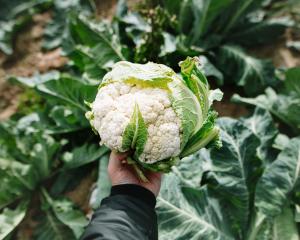Tree lovers have a part to play in saving an ancient tree, reports Gillian Vine.
The oldest living kauri (Agathis australis) is about 2000 years old and there is fossil evidence that kauri forests were here 80 million years ago.
However, one of kauri's Australian relatives has an even more impressive history, as fossils of wollemi (Wollemia nobilis) have been dated to 200 million years ago.
Those fossils were all that was known of wollemi until 1994.
That year, Australian parks field officer David Noble was doing a spot of abseiling in the Wollemi National Park 150km from Sydney.
In a ravine, he saw a tree he did not recognise and took a twig to show botanists.
They, too, were confused and it was not until they returned and collected cones that they were able to declare the tree was a species thought to have become extinct millions of years earlier.
How they survived is something of a puzzle but wollemi have at least one trick to protect themselves.
When temperatures drop, the tree protects its leaf buds by coating them with a white resin and the resulting knobs are known as polar caps.
Although widely referred to as wollemi pine, the coniferous tree is not a member of the pine family but belongs to the Araucariaceae clan, making its nearest living relatives kauri, Queensland hoop pine (Araucaria cunninghamii) Norfolk Island pine (A. heterophylla) and monkey puzzle (A. araucana), which comes from South America.
Hardy to about minus 12degC, wollemi will grow to 40m but their small root systems make them versatile in cultivation, enabling them to be grown in containers as well as open ground.
The discovery of wollemi in the Blue Mountains region caused huge excitement but concern, too, as there were just two small patches totalling fewer than 100 trees and the site was in an area where bush fires were not unusual.
In addition, there was shown to be little genetic variability, meaning the trees were at risk of disease, such as Phytophthora, which would cause dieback if it attacked the trees.
Shortly after wollemi was found, the Australian Government stepped in, giving the trees legal protection and setting up a special nursery in Queensland to propagate wollemi.
That's where tree lovers come in. As with the dawn redwood (Metasequoia glyptostroboides), known only from fossils until found in China in the 1940s, the dispersing of wollemi throughout the world is of vital importance in ensuring the species' survival.
Until now, most of the wollemi in this country have been grown in parks and botanic gardens - Dunedin Botanic Garden has been given three - but a small number are currently being offered through Otago-Southland garden chain Nichol's, in an exclusive arrangement with Christchurch's Ambrosia Nurseries.
Ambrosia's chief executive Greg Kitson was in Dunedin recently to launch the product and traced the history of wollemi's introduction into this country.
"Getting it into New Zealand goes back about 12 years,'' Mr Kitson said.
The time reflected the Erma and MAF processes, and the need for iwi consultation, he said.
Ironically, at the same time as he was trying to get them into New Zealand, wollemi were being propagated by tissue culture at the Crown Research Institute's Scion Nursery in Rotorua.
However, these plants were grown in containment quarantine and sent to Australia, so in a sense were never in New Zealand, Mr Kitson said.
He worked closely with the late David Given, curator of the Christchurch Botanic Gardens, and after Mr Given's death, Mr Kitson ensured that New Zealand's first wollemi was planted to mark the gardens' 150th anniversary, forming the centrepiece of a Gondwana area within the gardens.
Nichol's is taking orders for packages containing a 1m tree, DVD and certificate of authenticity signed by wollemi discoverer David Noble.
Each package costs $399 and although that sounds expensive, it may be the only chance for some years for tree lovers to obtain the rare plant, as Mr Kitson is unsure whether Ambrosia will continue to produce them.
"If and when we do more of them, it would be three or four years away and [without the DVD and certificate] they would be in the $100 bracket,'' he said.












